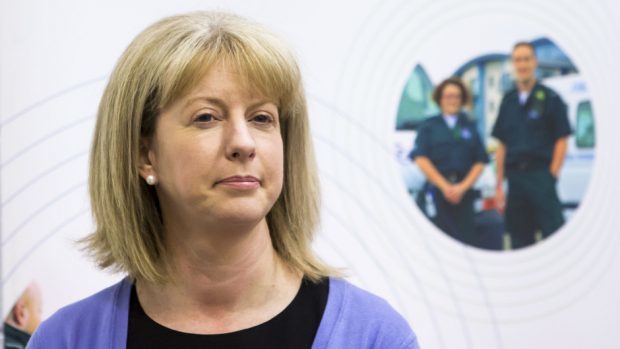A key target to increase the proportion of patients diagnosed with cancer at the earliest stage has been missed – with NHS Grampian among the worst performers.
The Scottish Government set a goal in 2012 to improve the rate of breast, bowel and lung cancers found at the first stage by 25% by the end of 2015.
New figures show the increase in early detection rates was 8%, with none of Scotland’s health boards meeting the 25% target.
NHS Grampian was the worst performing mainland health board in terms of early detection, with just over 20% of breast, bowel and lung cancer being diagnosed at stage one.
Last night, the health board said it would be investigating further the factors which affect early detection.
North East MSP Lewis Macdonald described the figures as “particularly worrying” and called on the Scottish Government to provide more funding for the health board.
Health Secretary Shona Robison said overall cancer death rates had dropped by 11%.
But Mr Macdonald said: “It is particularly worrying to see that NHS Grampian has some of the worst figures in the country for the early detection of breast, lung and colorectal cancer. An early diagnosis is vital in increasing the patient’s chance of beating the disease.
“The continued under-investment in health services in the north-east has had a long-term impact on the delivery of diagnostic tests, vital in ensuring the early diagnosis needed for recovery.”
For patients diagnosed with breast, bowel and lung cancer in the most-deprived areas of Scotland in 2014 and 2015, the highest proportion – 29.6% – were diagnosed at stage four – the most advanced – while those living in the least-deprived areas, the highest proportion – 28.8% – were diagnosed at the earliest stage.
Ms Robison said: “Overall cancer death rates have dropped by 11% over the past 10 years and early detection is vitally important to continuing this trend.
“The figures released today show that over 25% of all breast, lung and bowel cancers diagnosed in Scotland during 2014 and 2015 were detected at stage one – an increase of 8% in the last five years.”
A spokesman for NHS Grampian said: “We have participated in the detect cancer early programme and campaigns, and has implemented a wide range of measures similar to those implemented in other health board areas.
“We are concerned about the recorded performance in relation to detect cancer early and have commissioned a study to further examine the factors which affect early detection.
“We have been in close contact with the Scottish Government on the matter and will continue to review it.”










